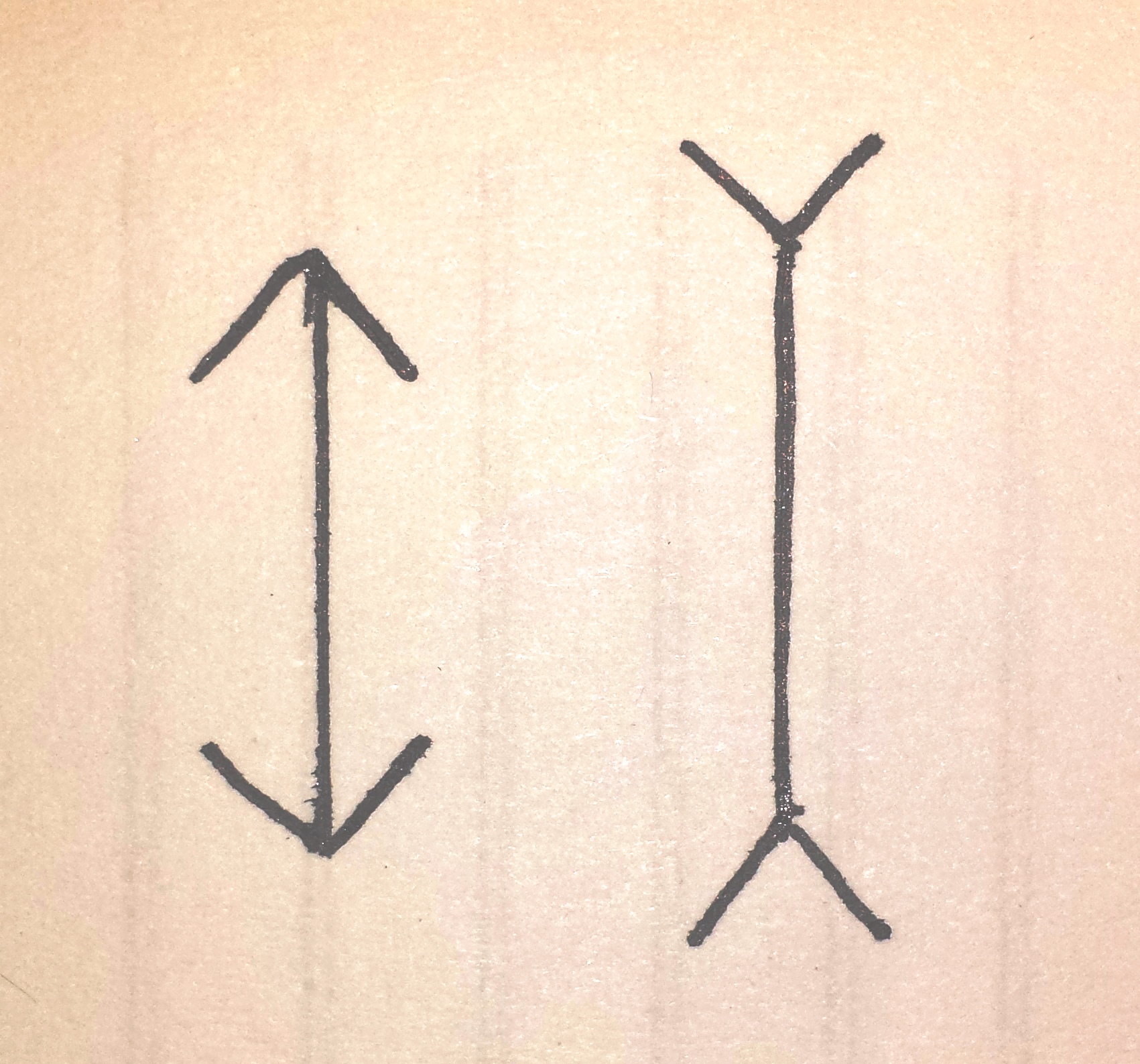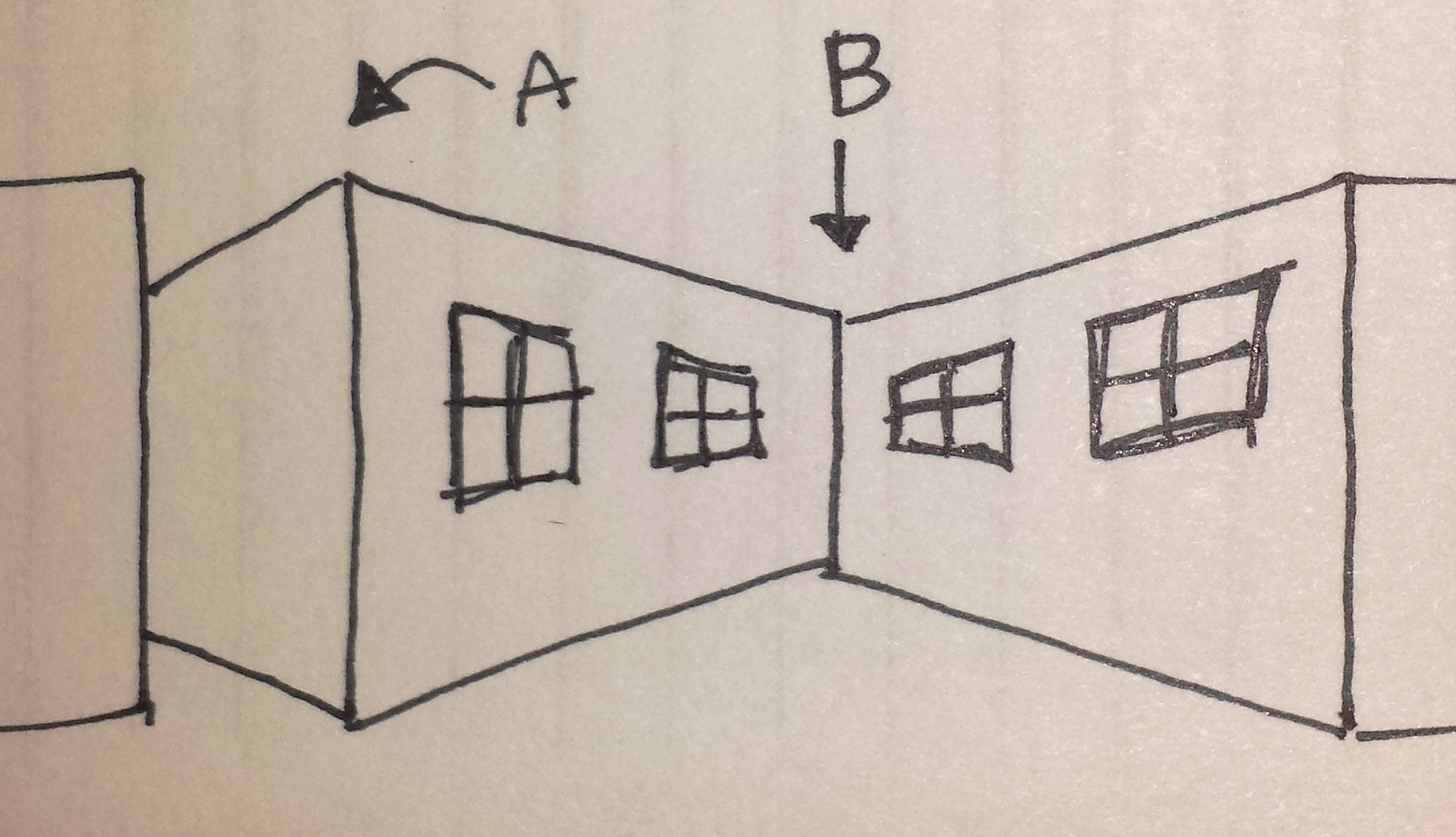 Which line is longer?
Which line is longer?
Most people who grow up in industrialized environments will be at least a little bit tricked by this optical illusion, called the Müller-Lyer illusion. At first look, it may seem as if the line on the left is shorter than the line on the right. In fact, if you look closely and carefully, you can probably see that both lines are the same length.
Some psychologists theorize that susceptibility to this illusion is due to a strongly “carpentered” environment, one built by humans with the help of machines. Such environments are made mostly of straight lines and right angles. If this geometry is all around us all the time, our brains get very good at interpreting these environments.
That advantage, though, is a disadvantage when looking at the Müller-Lyer lines because our brain learns to associate angles like the one on the right with distance and ones like the one on the left with closeness. Then, it alters our perception of their height to adjust for perceived space.
Bear with me.
Consider my drawing of a room and hallway below. You can see that the corner closest to us (A) has lines like the point of an arrow on both ends (like the line on the left above), while the one further away (B) has lines like the rear of an arrow on both sides (like the line on the right). Our brain gets so used to inferring distance when it sees these angles, it assumes that any line with angles like B appears inaccurately short because it’s far away. That’s how the illusion tricks our brain.
People who don’t grow up in a carpentered environments, though—hunter gatherers and other groups who spend most of their time in nature and other uncarpentered environments—don’t have brains adjusted to understanding straight lines and angles, so the illusion doesn’t work on them.
The Müller-Lyer illusion, then, is a great example of how our brains get acculturated in ways that shape even simple and straightforward perception tasks.
Lisa Wade, PhD is an Associate Professor at Tulane University. She is the author of American Hookup, a book about college sexual culture; a textbook about gender; and a forthcoming introductory text: Terrible Magnificent Sociology. You can follow her on Twitter and Instagram.


Comments 5
Lex Luthor — August 16, 2016
I wonder how this relates to the development of perspective in European art in the Renaissance period. Were people shifting from living in round houses to square ones? Archaeologically, that kind of shift from ad hoc round houses to square houses arranged in blocks often accompanies increasing social stratification, which is what you'd expect in Europe at that time.
Andrew — March 18, 2020
Great post! Well as the world has made the progresses in the felid of technology many useful activities have also been reduced and https://grandwriters.net/essay-help-online/ are the best for students. No doubt that the technological advancements have facilitated our life but they have reduced the useful activities like reading.
Micheal Jordan — July 5, 2023
The way this blog post reviles into the history of optical illusions across various cultures is truly interesting.
Home Improvement Services Seattle Washington